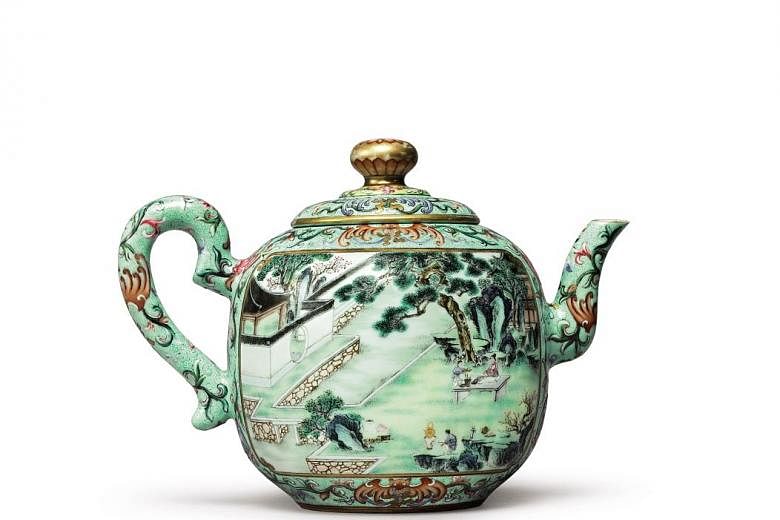LONDON • "We're not at the heights of 2010 and 2011, but the market has definitely recovered its mojo," said Mr Henry Howard-Sneyd, Sotheby's chairman of Asian art, who was the auctioneer in New York this month when an 18th- century Chinese teapot sold for US$3.5 million (S$4.7 million), more than 10 times the low estimate.
The teapot was one of the star lots in Sotheby's biannual Asia Week auctions that raised US$60.4 million. Thanks to two prestigious single-owner collections, the total proceeds from the series was 149 per cent higher than the equivalent series last September.
All five of the Sotheby's auctions exceeded their high estimates. Christie's rival sales of Asian art in New York took US$58.6 million, an 8 per cent rise on September last year, with an overall selling rate of 89 per cent across its eight auctions.
Brexit, the impending United States presidential election and general macroeconomic jitters might have cooled demand for European and American art, but the market for historic Chinese artefacts seems to be warming up again - at least at auction.
"A sense of depth is back," added Mr Howard-Sneyd, commenting on the number of bidders from China, Hong Kong and Taiwan vying for the lots in New York.
Sotheby's said that collectors from Asia purchased 58 per cent of the lots and accounted for 75 per cent of the value of the sales.
In the case of the 18th-century famille-rose Hui Mountain Retreat teapot, more than half a dozen bidders competed before it was bought by an Asian collector.
Finely painted with a scene of tea being served in a garden, it bore a poem by the Qianlong emperor celebrating his fondness for the brew. The pot had been owned by renowned American collector Murrell Rickards Bowden Werth, who died in 2014.
"Things with an imperial connection have real pulling power for the Chinese," Mr Howard-Sneyd said. "And if it has been in a Western collection 30 or more years, it can't be a recent fake, which gives them confidence."
Back in 2011, worldwide auction sales of Chinese antiques reached US$3.4 billion, considerably more than the US$2.4 billion achieved for impressionist and post-impressionist art, according to the 2016 Art Market Report published by Tefaf in March.
Over the past four years, as the Chinese government has cracked down on gift-giving and economic growth has slowed, sales of Chinese antiques have been less bullish, standing at US$2.2 million last year, compared with US$1.9 million for impressionist and post-impressionist art, according to Tefaf.
Market-fresh pieces with desirable provenances remain the main draw for Chinese bidders at auction.
On Sept 15, Christie's offered a second tranche of mainly Song dynasty ceramics from the Linyushanren Collection, owned by a private Japanese individual, whose first auction raised about US$6.3 million in December at Christie's in Hong Kong. Part II (there is one more sale to come) included a rare Southern Song dynasty (1127-1279) black ware "oil spot" tea bowl from the Jian kilns that has been documented as being owned by Japan's Kuroda clan, possibly as far back as the 16th century.
The bowl's exceptional iron oxide glaze, resembling a constellation of stars, was also much admired, inspiring a protracted duel between three bidders up to a final price of US$11.7 million against an estimate of US$1.5 million to US$2.5 million. The successful buyer was a Chinese telephone bidder.
Christie's said buyers from China and Hong Kong bought 75 per cent of the lots at its Asia Week sales, with US and Japanese collectors most prominent among the remaining 25 per cent.
NYTIMES

